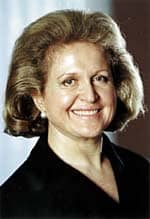Supervision at the Bedside
By hiring a desk-free respiratory coordinator who works exclusively on clinical and on-the-floor issues, the staff at this facility have improved quality of care while saving costs.
“How can you evaluate me? You’re always in your office. You’ve never seen me work with a patient.” Sound familiar when doing an annual evaluation for a staff member? Instead of rolling your eyes and dismissing the questions, maybe we need to actually consider their point. How are we as managers ensuring that our staff is doing a good job? Do we use the “if there haven’t been any complaints, then everything is OK” philosophy? Or maybe we just act like the fire department, putting out little blazes as they occur. So we promise our employees that this year we are going to get out and observe more. But then those pesky little inconveniences like JCAHO meetings or sessions to discuss the latest changes in regulations from our government friends get in the way.

We as respiratory managers have different challenges than our nursing colleagues. Nurse managers or assistant nurse managers have their entire supervisory roles located in a single area concentrating on a limited variety of patients. We need to ensure that our staffs are competent on patient variety that runs the gamut from premature infants to those born when Teddy Roosevelt was President. We also need to operate in environments ranging from the emergency department to outpatient testing to the critical care unit, and all points in-between.
At The Washington Hospital, a 200-plus-bed community facility, we are addressing these issues. We began by hiring Gene Fordyce, RRT, into the position of respiratory coordinator. While supervisory in nature, this job description focuses the coordinator completely on clinical and educational issues. In fact, when discussing the position, I wondered whether to provide a desk as one will tend to want to sit at it. The responsibilities of the position are as wide-ranging as the type of services we provide. All day-to-day, hour-to-hour clinical decisions are the responsibility of the respiratory coordinator.
The day begins before the daylight shift arrives. Reports are received from the night shift, and the OR schedule is reviewed. The coordinator can then make the assignment or sign off on the assignment the night shift made. Next, our patients are reviewed to see how they fit into our expanding use of therapist-driven protocols. The rest of the day can be spent reviewing charting, observing the staff, helping when needed, or being a point of reference for staff questions. So when the wisps of smoke start to appear, such as an unplanned bronchoscopy or ventilator transport to CT scan, we can put the fire out quickly. The respiratory coordinator is also the point person for the orientation of new staff.
Education is a huge part of this job. Not just for respiratory but for nursing and our physicians as well. We have started an in-service program for the family practice residents and conduct in-services for nursing as requested. By being proactive in the education of our family practice residents, we are able to avoid many of the problems we have had in the past with incomplete or incorrect orders for oxygen, therapies, and home care arrangements. We are also able to establish a rapport with these physicians where they feel much more comfortable with the knowledge and skills that respiratory therapists possess. They are much more likely to seek our advice when questions arise. This benefit extends after their residency as many of the residents join local family practices. The nurse practitioners of our main pulmonology practice also heavily depend on Gene’s knowledge and opinions.
The coordinator also assists the education department as needed in teaching the respiratory component of the hospital’s critical care course, and will soon be a CPR instructor.
What, no paperwork? Yes, that’s right. No paperwork. Once again, the natural tendency would be to start slowly assigning administrative tasks. However, the job description is specifically written to preclude this, thus preventing us from starting down this slippery slope. We might let Gene order supplies once in a while but that’s it. By freeing up the time spent doing administrative tasks, we are able to have someone totally dedicated to ensuring that the patients are receiving the best care possible.
Can’t fit this position into your budget? Try dazzling your administration with numbers like these. Since Gene started in October 2002, we have seen an 11% decrease in total number of treatments given, a 12% decrease in the acuity of the treatments we give, and decreased length of stays for COPD and asthma patients. Even with the extra salary, including Gene’s, we are spending less on therapist salaries than before.
As we move into the 21st century, this is more important than ever. Remember when we used only one drug and had one type of nebulizer for everybody? Remember calling physicians to get an order to decrease a patient’s oxygen via nasal cannula from three liters down to two liters? Those days are gone—I hope never to return. Instead, we are in an environment where respiratory therapists are part of the decision-making process. We earn our money now more with what we know than what we do. As the technology grows more sophisticated and new medications and treatment modalities come about, it is more and more essential for us to have someone who concentrates on these matters exclusively.
Frank Gladysz, BS, RRT, CPFT, is the director of respiratory service and sleep center, The Washington Hospital, Washington, Pa.










